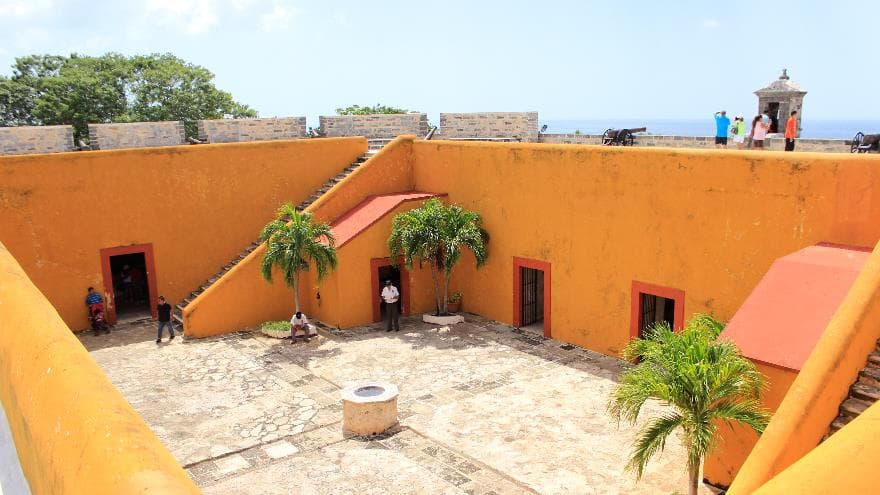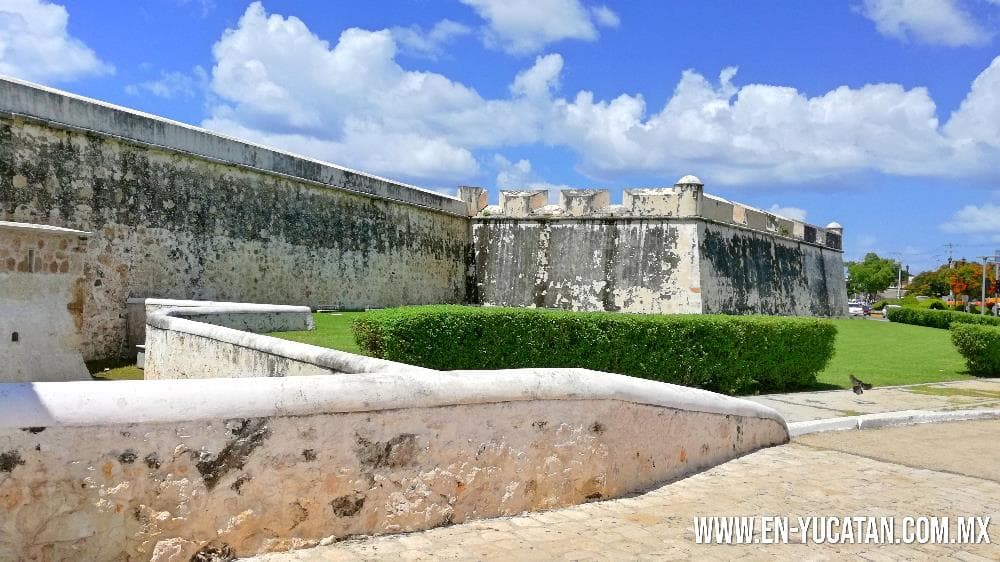From s. XVI, after the founding of the town, began construction of military buildings. The Military Architecture of the first phase was altered or destroyed over time, the second stage begins with the construction of the wall in 1686 and the third stage in the late s. XVII when he built the redoubts and batteries of coast.
The construction of the wall was a consequence of economic and commercial boom that arises at the time. The wall was 8 and fourth defenses outside doors, and was reinforced by the Fort of San Miguel with its two batteries, San Luis and San Fernando (now defunct) and the fort of San José el Alto with Luke and batteries Matias.
fortress campechebastion of campeche

Bastion of San Carlos
The bulwark of St. Charles has its beginnings in the seventeenth century it was named after King Charles II of Spain in the year 1676 was inaugurated by the then Governor Don Sandro Fernandez de Angulo, in the same manner as other defenses presents a pentagonal form, now is the only reachable Through a modified ramp from the street leads to the first level, its sturdy wooden doors were made from which are invited to tour the building, in the bottom is the basement are two rooms where he probably worked as a prison and these have come countless stories of tunnels and secret passages, the second level has a terrace that houses two powerful guns perched on their carriages and a bell tower in one of its edges.
In times past the bays were used as guard, this bastion has a well and a silo called purguero where prisoners were tortured. It currently has hosted the title of the city which was granted October 1, 1777 by King Carlos III of Spain, also houses the keys to the city, and the actual masses, a great museology which describes the evolution of a city through the centuries.
The bastion has weapons inside furniture, sculptures and replicas of planes and parts of the story, in a room is Dela Indian sculpture mosquito, from the top you can see “The door to the sea,” “The Santa stronghold Rosa. ”
Bastion of Santa Rosa
Is one of the beautiful remnants of the Great Wall.
Is engraved on the lintel of the door the name of Santa Rosa and a monogram of the Virgin Mary. Like other plant is pentagonal and has a small courtyard. From its roof you can see the three turrets that were part of the checkpoint.
Bastion of Santiago
This was the last of the eight defenses and was built in 1murallas logwood, strong campeche704 who stayed with the walled enclosure. The name was given in honor of Santiago de Compostela or Santiago de Matamoros patron of the Spanish conquests.
One of those defenses that defended the city against pirate attacks was to Santiago, still standing. The structure retains only the original gateway, as the rest of the enclosure is the result of remodeling.
Currently, the botanical garden Xmuch Haltún (sartenejas set) contains a lot of the flora of the peninsula where some plants are medicinal, edible and other ornamental.

Bastion of San Pedro “Juan’s church of God”
It is the sixth defense raised for the enclosure walls of Campeche, the city campechede strong. It has a square-type plant, so its four walls facing out, and still holds the four turrets on its corners. Your gateway shown above the lintel a shield with the papal tiara and the keys of heaven, which is the symbol of San Pedro, and inside is a small courtyard with a staircase leading to the roof, where you can see the sentry. One of them had a bell to alert people in case of attack and one still has its outhouse.
During the nineteenth century played an important role during the battles he had against the government of Mérida and against Santana general, its function was to shelter the troops and tank ammunition and gunpowder. Possibly his purguero witnessed torture carried out in the eighteenth century during the so-called Holy Inquisition, while his side was built the hospital and the church of San Juan de Dios, which was built in the early eighteenth century, and this becomes the first Mexican hospital, although the hospital currently does not exist if church and maintained the sober style, this building stands out in a dome topped by a lantern in which fire was lit as a sign that was a hospital
At present there are the offices of the INAH.
Bastion of San Francisco
Because of the importance and the role they had lomurallas campeche, campeche strong Franciscan missionaries in the lands of the Maya people he should be the name of this bastion. It is another of the fortifications that still stand, although it had to yield before the advance of modernity at the end of the nineteenth century will cut off almost half of its structure to make way for a tram. Anyway, in her little courtyard is the old ramp to the roof, where you can get an excellent view of the city.
Its large size is attached to the door of the earth by a large stretch of wall at the other end was connected to the bastion of San Pedro, if you up and takes a journey you will appreciate how this shaped the historical center, the Mall and market and other sites of interest. Currently, the bastion of San Francisco has been restored to its original size and you can see the gorge, the guard room the storage room and the barracks.
